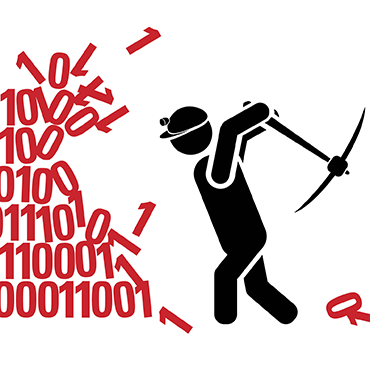'Irish cynics' talk big data's good, bad and ugly

Behind the buzzwords and pointless analytics lie real potential, but agencies and the private sector still struggle to use big data effectively.

Big data opportunities abound, sure, but if you were looking for a bubbly pep talk about innovation and data, you were bound to be a little jarred by the cold slap of pragmatism presented at FedInsider’s “Government Leadership in the Data Age” panel May 12.
The discussion was bookended by a pair of “Irish cynics” (self-labeled by Tony Summerlin) who kept the discussion firmly grounded in reality: Niall Brennan, chief data officer and director of analytics and enterprise data for the Centers for Medicare and Medicaid Services, and Summerlin, special advisor to the CIO at the Federal Communications Commission.
When it comes to big data, “[There are] way too many buzzwords, way too many white elephants, way too much trust placed in magical, out-of-the-box solutions,” said Brennan. “Big data holds incredible promise but it needs to be linked to the fundamentals.”
Those fundamentals include subject matter experts who can cast an educated eye on the data while providing a problem-solving approach and a focus on tangible outcomes rather than meaningless process, Brennan said.
Summerlin echoed Brennan’s advice and urged clear thinking as agencies jump into data collection and analytics.
“Why are you collecting this in the first place?” Summerlin said was a crucial — but oft-neglected — question.
Too often, Summerlin said, government agencies take a more-is-more approach, collecting superfluous data, performing unnecessary, basic analysis and slapping it all together in ways that aren’t useful.
“We think that just putting all this [data and analysis] together somehow creates value for somebody,” he said. “I’m not so sure.”
Another issue the pair tackled: the protection of personal privacy within massive caches of data.
“I think the horse is out of the barn,” Summerlin said of personal privacy on the Internet. “I can find out anything on anyone anywhere at any time.”
He applauded the federal agencies that try to scrub personally identifying information from data before using it for analysis, but he noted the odd position of the government as a whole.
“Part of the government is trying to ensure you have no anonymity whatsoever,” he said, referring to intelligence agencies’ surveillance programs, “while the other part is trying to protect [personal information]. You can’t have it both ways.”
Several panelists also noted the difficulties in sharing data between government agencies, and the struggle to ensure that data is kept in clean, machine-ready formats.
The panel did serve up a few success stories with the skepticism.
The Government Accountability Office’s Joah Iannotta noted how a big data mashup between FEMA insurance applications and federally backed mortgage info had enabled her agency to identify likely fraud in the wake of Hurricane Sandy. And Consumer Financial Protection Bureau Chief Data Officer Linda Powell shared how CFPB data analysts discovered medical debt — much of it undeserved or even unbeknownst to consumers who thought insurance had taken care of things — was tanking peoples’ credit scores. Credit reporting agencies now give much less weight to medical debts in calculating credit scores, thanks to the CFPB pointing out the messy insurance situation.
All four panelists agreed that big data holds immense opportunity — much of it waiting for creative minds to find it.
“Err on the side of openness,” Brennan advised, noting the value of publishing data sets because some data that might appear to be “crap” could yield valuable insights if the right person is able to use it.





